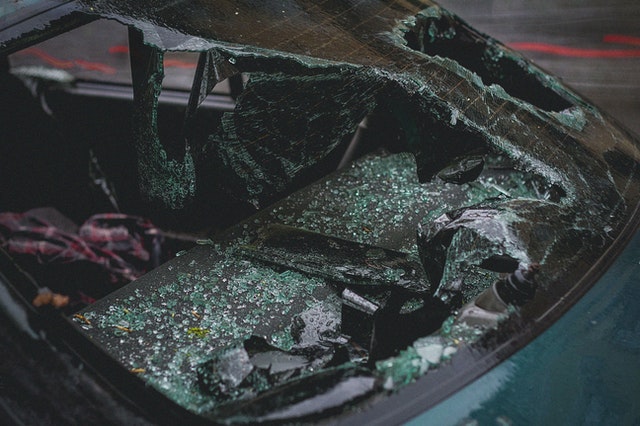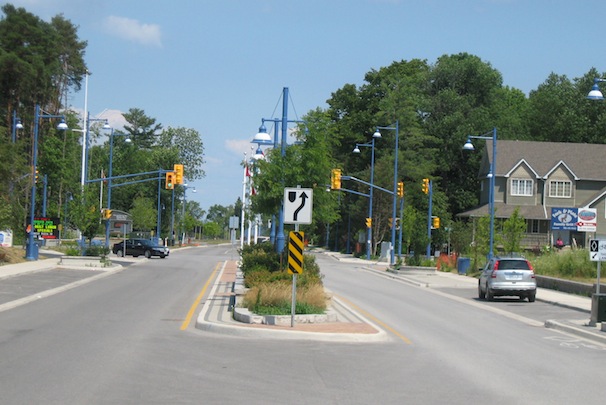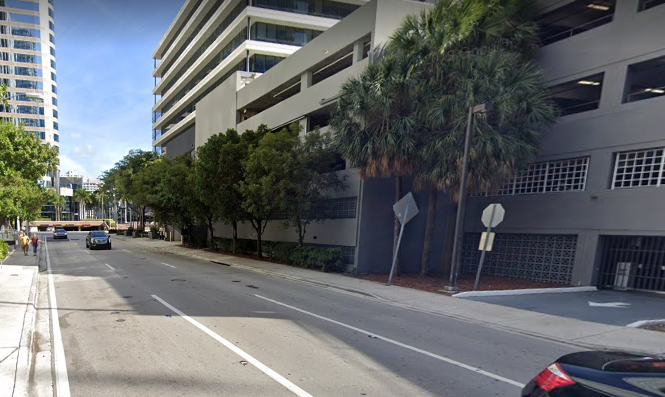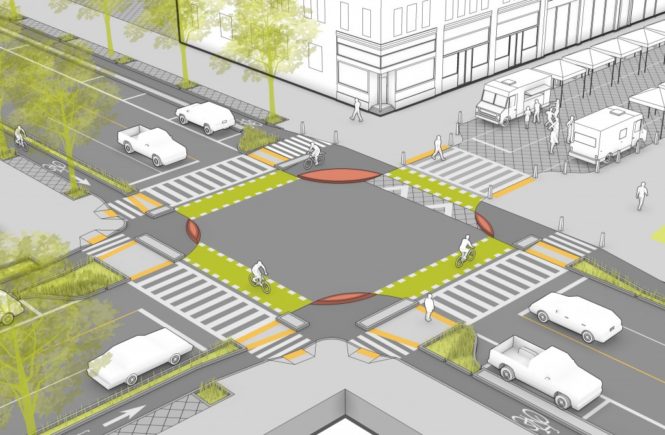The title of this post contradicts many articles citing improvements in traffic safety since the 1950s. Yes, fatalities per vehicle miles traveled has declined drastically since people drive more and cars have become safer for their occupants due to seat belts and airbags. Yes, total U.S. fatalities have dropped from around 50,000 per year in the 1960s to around 35,000 per year recently. But underneath the multi-decade graphs of declining aggregate roadway crashes, there are some alarming trends.
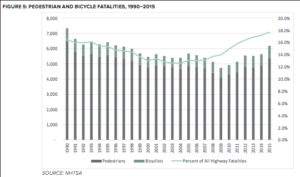
As a man who has experienced American roads as a pedestrian and cyclist daily for the past 8 years, our streets have never felt less safe. My observations are backed up with evidence. Pedestrian and bicycle deaths have hit quarter-century highs, and motor vehicle deaths increased by 8%, the largest percent increase in 50 years, in 2015. Pedestrian and cyclist crashes are making up a larger proportion of overall roadway fatalities. Whenever a small annual dip in crashes occurs, pundits laud over it and call it amazing progress. Meanwhile, the U.S. has double the roadway fatality rate of any other developed country.
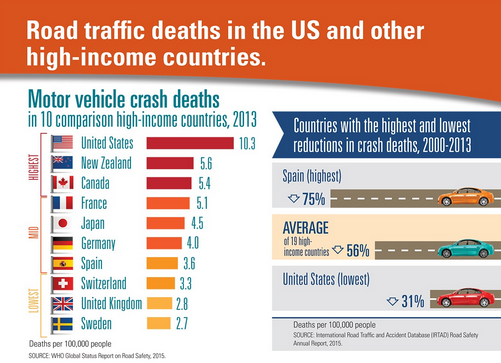 So the stats not only show a growing danger to pedestrians and bikes, but streets feel more dangerous now compared to five years ago. Why? Here are my anecdotal, purely unscientific observations.
So the stats not only show a growing danger to pedestrians and bikes, but streets feel more dangerous now compared to five years ago. Why? Here are my anecdotal, purely unscientific observations.
- SUVs. The SUV market segment has exploded in the past few years. By 2022, 84% of GM vehicles sold will be SUVs and trucks. As a pedestrian and cyclist, it’s difficult to look over an SUV to see other parts of the roadway. Since they’re so tall, if an SUV strikes a pedestrian or cyclist even at low speed, the injury will be to vital organs and not just to a person’s legs. It seems researchers agree:
“Pedestrian crashes have become both deadlier and more frequent. The increase has been mostly in urban or suburban areas, away from intersections, on busy main roads and in the dark. Crashes are increasingly likely to involve SUVs and high-horsepower vehicles.” – Insurance Institute for Highway Safety
Anecdotally, it seems SUVs travel faster than sedans, even on local roads. A combination of feeling more protected from other traffic and being higher than other traffic may play a role in this. Also, the amount of power newer SUVs have is incredible. A Streetsblog reader writes:
Add in the increasing horsepower of cars and SUVs. A Volvo hybrid SUV has 400hp. Going 0-60 in 5 seconds — you just barely touch the pedal — is a recipe for pedestrian deaths. Most SUVs have very high bumpers, so kids are going under the car when struck, not onto the hood. And now they come with Bull Bars, which have to be even more deadly to pedestrians.
- Dashboard gadgets. Even the lowest end car now has an in-dash control panel that’s basically an iPad. I’ve driven in cars with these and they often make the simplest task like changing the radio station a byzantine endeavor filled with deep menus and unlimited options. Dash navigation maps are useful but also take attention away from the road. I’ve seen people glued to their navigation map for trips even in their own city, even for trips less than 2 miles, and even on routes they’ve driven on hundreds of times before. Car makers are including more gadgets in their vehicles because they sell cars, not because they make driving safer.
- Smartphone use while driving. This has exploded in the past few years. Even in states where handheld devices are banned, I see people using them on local streets where enforcement is unlikely. Here in Florida, I often see people texting or talking directly on their cell while making maneuvers in heavy traffic that require attention. Even hands-free devices pose a safety risk, and these devices are used even by people aware of the danger of distracted driving. It seems distracted driving is becoming more culturally accepted as more devices and apps vie for our attention.
- Marijuana use. Studies on the topic have shown some evidence that marijuana use increases the risk of crashes. This is becoming more common as recreational, non-medical marijuana use becomes more culturally accepted.
- Backup cams and autonomous driving features. Features like lane change warning sensors, back up cams and other autonomous features claim to reduce or eliminate human driver error. On the other hand, I’m seeing an increase in the number of people who don’t turn their heads when they back up and completely miss people and objects behind them. Becoming overly reliant on convenience features tends to make drivers less attentive. As autonomous driving features become common, expect more people to cede control of their vehicles and their attention to technology. That’s not to say AI and autonomous vehicles will be a disaster, but all new technology has a burden of proof because, by nature, it is unproven and untested in real world conditions over a long period of time. And as the evidence of recent U.S. crash increases shows, tech features & gadgets car makers use to sell more cars aren’t showing a safety benefit.
Many of these issues are undermining the complete streets and traffic calming work that’s being done across the country. Improving roadway safety can have quality of life and livability benefits which span every population demographic. Vision Zero is showing local benefits, but national trends are pointing downward. In 2018, the state of U.S. roadway safety seems like a race between municipalities and regional agencies implementing roadway redesigns & enforcement, and car makers and cultural factors pushing speed, distraction and more aggressive vehicle designs.

